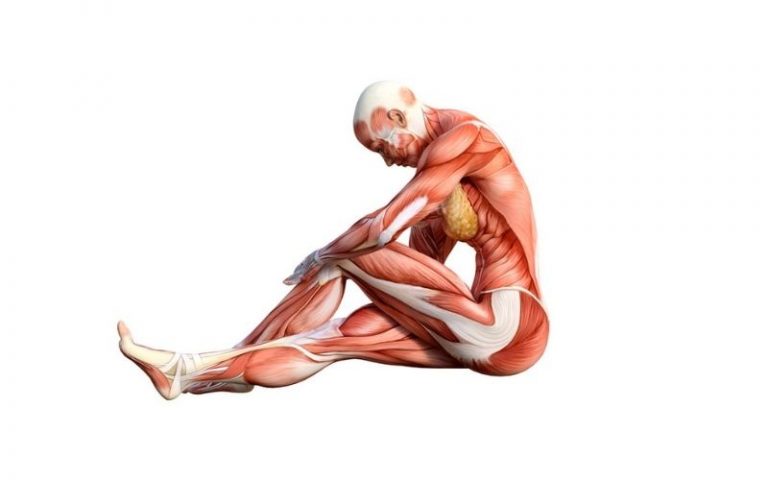How Your Calf Muscles Can Determine Your Risk Of Alzheimer’s Disease

Cognitive decline is something none of us want to experience — especially as we age.
While we typically look at anti-aging as special skin care ingredients, harsh beauty habits to avoid, and overall routines to improve external appearance.
However, it’s also important to anti-age cognitively, too.
Making sure to have good habits such as staying active and brushing your teeth can help reduce the chance of dementia as you age.
Read Now: The Chilling Link Between Brushing Your Teeth And Alzheimer’s Disease
Dementia is the most common condition of cognitive decline in elderly population in which degenerative changes occur in brain structure and function affecting memory, concentration and problem solving capabilities.
Risk factors for dementia
The risk factors for dementia include diabetes mellitus, atherosclerosis, alcohol and tobacco consumptions and hypotension.
Hypotension, which is defined as chronically low blood pressure has been associated with dementia in elderly population by clinical studies.
Studies have proved that chronic hypotension is an important predictor of decline in cognitive function and risk of degenerative changes in brain such as dementia.
Low blood pressure results in insufficient flow of blood to brain irrespective of posture of the person.
There is one form of hypotension known as orthostatic hypotension in which blood pressure decreases upon change of posture that is after standing.
Orthostatic hypotension has been proved by studies to be associated with dementia.
Researchers believe that it is deficiency in blood flow to brain which results in many brain related diseases including Alzheimer’s, Parkinson disease and dementia.
For studying association between low blood pressure and dementia, a blood pressure is first defined as low when it is less than 90mm Hg for systolic and less than 60mm Hg for diastolic blood pressure.
Here, we will answer how dementia is caused by low blood pressure.
How dementia is caused by low blood pressure
Recently, research was conducted to evaluate cognitive function of elderly population having a high school degree or higher education by data assessed through the use of a FDA approved quantitative tool.
This evaluation which was solely computer-based was a mean of providing a clear assessment of cognitive abilities of an individual on a scale of 0-100.
A score of 75 and above indicates that the person is in normal range for cognitive function with respect to his/her age. A score that is between 50 and 75 shows that the person is in below normal range and at a higher risk for dementia.
A score below 50 indicates that the person is already exhibiting many characteristics of dementia.
After characterization of individuals suffering from dementia, their deteriorated cognitive function is related to their blood pressure. Blood pressure is actually a measure of force which is required to stop the blood flow through arteries of arm.
A resting blood pressure gives reading of the blood pressure when measured after a person has been sitting quietly for about 10-15 minutes in a stress free environment.
According to the results of the study conducted on different geographical populations, the low resting blood pressure was found to be positively related with dementia.
How calf muscles can correct low blood pressure
Low diastolic blood pressure results from the use of antihypertensive drugs, heart failure, old age, or from other health conditions.
Diastolic hypotension is characterized with low cardiac output meaning that the heart is not pumping out sufficient blood in each stroke.
It implies that there’s decrease in blood returned through the lower body due to less cardiac output.
There are specialized muscles located in middle of leg known as soleus muscle which have the role of pumping blood back to the heart.
So, it’s seen by researches that soleus muscle have important role in keeping the resting blood pressure within normal range.
To maintain the blood pressure and blood flow to the brain within normal range, soleus muscles can play an important role when trained properly.
Soleus muscles can be trained through activities in which they are fully engaged such as toe standing and sustained squatting.
There are many exercise regimes available for training the soleus muscle.
Similarly, a passive exercise option also exists which allows one to conveniently train the soleus muscle without putting too much effort.
Researches have shown that mechanical and electrical stimulation of soleus muscle increases the venous return to the heart.
Preliminary clinical studies have found that when soleus muscles are stimulated daily by any mean over the span of several months, it leads to raise in resting diastolic blood pressure, eventually improving the cognitive function and dementia symptoms in elderly population.
Dementia currently has no treatment, however researchers and health care community are focusing on reversing and slowing the progression of disease.
The low diastolic blood pressure which is associated with dementia is reversed through healthy calf muscles.
So the calf muscles play their role in reversing dementia and decline in cognitive function by raising diastolic blood pressure through their stimulation.
How to read blood pressure
Blood pressure is characterized by its two components that are systolic and diastolic blood pressure.
Out of these two components, diastolic blood pressure is better indicator of cognitive performance as proved by a study.
The lower number in a blood pressure reading is diastolic blood pressure which gives the reading of the blood pressure at the time of relaxation of heart.
A study performed to evaluate the effect of blood pressure on dementia revealed that low resting diastolic pressure was remarkably prevalent in study population suffering from dementia with 85% of them having low resting diastolic blood pressure.
Hypotension or low blood pressure is characterized by blurry vision, dizziness, and fainting due to poor supply of blood and nutrients to the brain.
The low reading of diastolic pressure that is below 60mm HG is of more concern when taking cognitive function into account as it leads to decline.
The study also revealed that a diastolic pressure above 60mm HG and below 80mm HG in elderly population was insufficient to maintain normal cognitive function.
The low resting diastolic pressure was seen to be detrimental to cognitive function in both elderly population and young adults.
Sources:
https://www.ncbi.nlm.nih.gov/pmc/articles/PMC4906299/
https://www.ncbi.nlm.nih.gov/pmc/articles/PMC6839486/
https://www.ncbi.nlm.nih.gov/pmc/articles/PMC6692677/
https://link.springer.com/article/10.1007/s00421-020-04547-7





